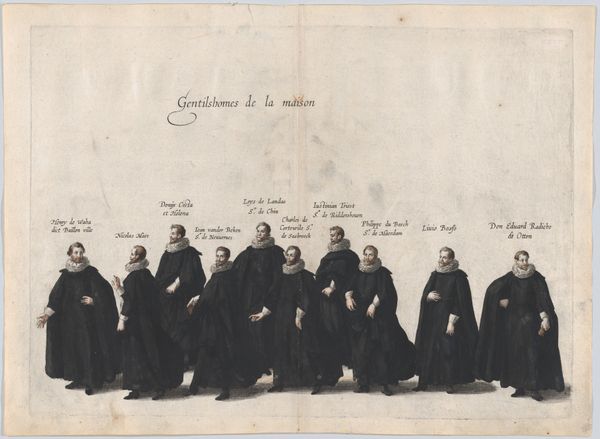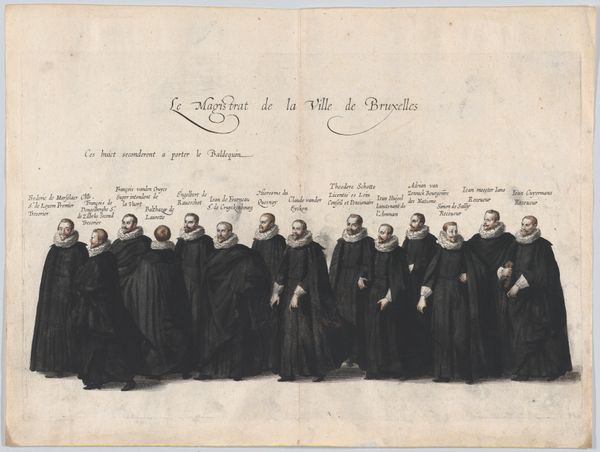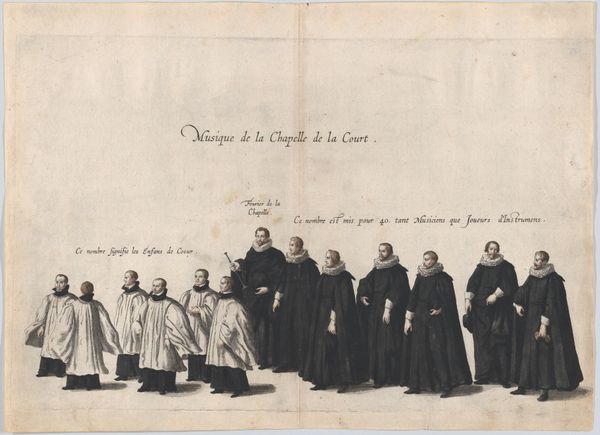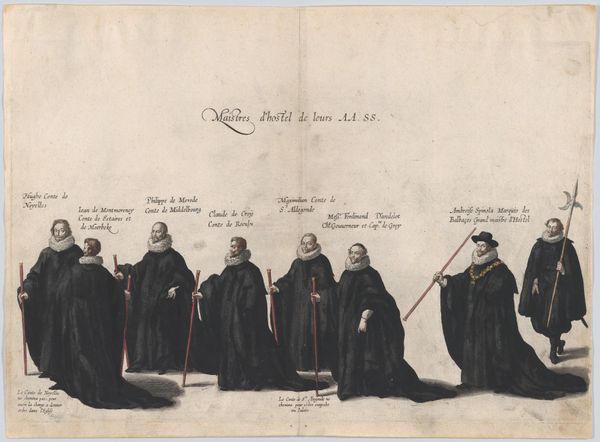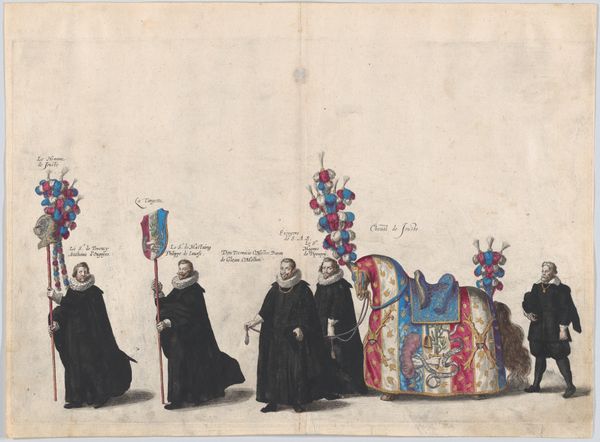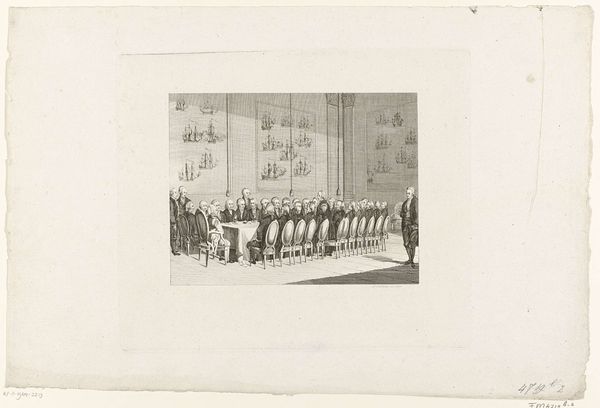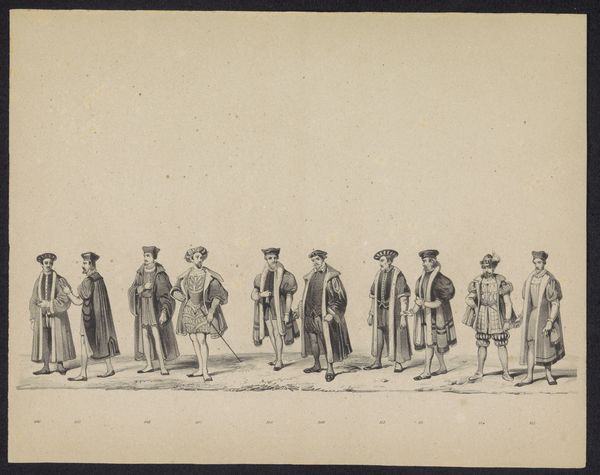
Plate 16: Valets marching in the funeral procession of Archduke Albert of Austria; from 'Pompa Funebris ... Alberti Pii' 1623
0:00
0:00
drawing, print, engraving
#
portrait
#
drawing
# print
#
genre-painting
#
history-painting
#
engraving
Dimensions: Sheet: 11 3/16 × 15 3/16 in. (28.4 × 38.5 cm) Plate: 10 × 15 1/16 in. (25.4 × 38.2 cm)
Copyright: Public Domain
Curator: Immediately striking is the somber repetition in this 1623 engraving. Everyone is draped in black. It’s quite imposing, in a quietly uniform way. Editor: You've keenly observed the repetition. The work, by Cornelis Galle I, is titled 'Plate 16: Valets marching in the funeral procession of Archduke Albert of Austria; from "Pompa Funebris...Alberti Pii."' It visualizes a specific historical event and associated social structures. Curator: Funerals always fascinate me. All of these servants marching…each labeled by their office – baker, tapestry maker, apothecary. What does this imagery tell us about power structures? Who is included, and therefore, who is conspicuously absent? Editor: Indeed. Notice how their individual identities seem subsumed by their roles within the Archduke's court. Each man, despite the slight variations in posture or expression, becomes a symbol of service and loyalty. Their clothing itself enforces that very uniformity in their roles. Curator: The ruffs are fascinating too; they act almost like a frame for each individual face, directing our attention to them, before it dissolves back into this block of functionaries. Are they mourning, or simply enacting a role? The performance of grief, itself a complex socio-political display! Editor: The somber palette reinforces the emotional gravity, creating a collective identity built around the act of mourning a powerful figure. We can consider how collective grief functions as social cohesion here. It gives the ruling class legibility and reinforces who "belongs." The labels above each figure—'Valets d’offices’— further fix them within that hierarchy. Curator: But even within those constraints, is there a subtle visual disruption? The angle of a cap, the slight turn of a head...signs of quiet agency. Does it read against these constraints? Editor: That’s an interesting point; within the rigid composition, those slight deviations do perhaps become acts of subtle assertion. Even within hierarchical structures, individuality persists. And what do we remember, centuries later? Their collective act of service to the Archduke...or perhaps, just what we’re seeing now – the human individuality fighting for visual space. Curator: A poignant point to consider. Perhaps even within structured grief, a touch of rebellion simmers. Editor: An exploration, it seems, into not just power, but also what makes us human. Thank you for that perspective.
Comments
No comments
Be the first to comment and join the conversation on the ultimate creative platform.


